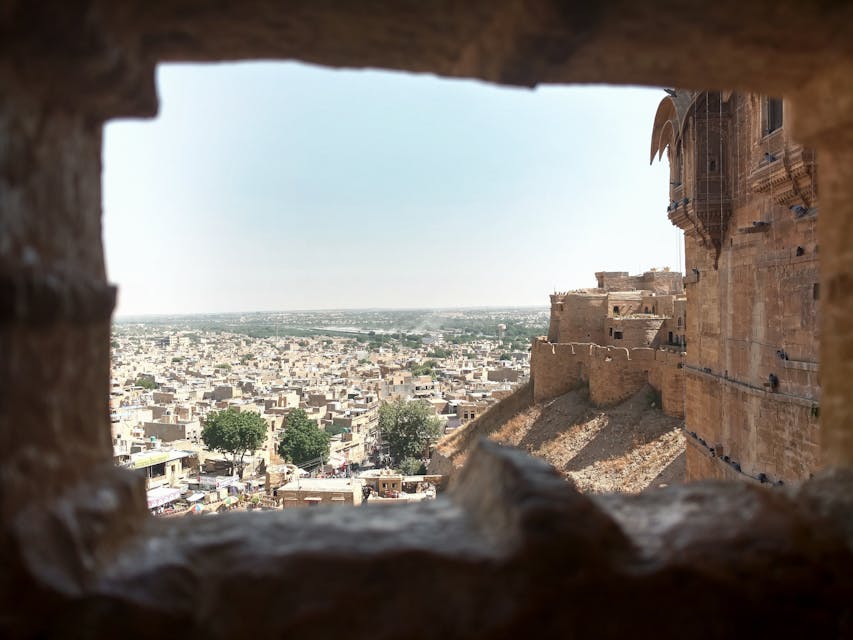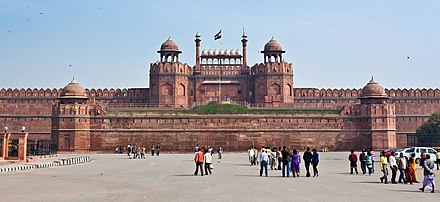10 Secret Facts About the Red Fort

Delhi, the heart of India, is a city that bridges two different worlds. The old and the new. From the labyrinthine streets of Old Delhi to the orderly avenues of New Delhi, the city embodies a past that is filled with alluring mysteries and magnificent monuments. Here are the top 10 must-see monuments that capture the essence of Delhi’s enduring legacy.
1. The Red Fort
The majestic Red Fort is not just a monument; it’s a symbol of India’s sovereignty, hosting the country’s Independence Day celebrations each year. Its red sandstone walls have witnessed centuries of history and stand as a testament to the grandeur of the Mughal Empire.

The Red Fort, also known as Lal Qila, was built by the Mughal Emperor Shah Jahan in the 17th century. It took nearly a decade to complete this magnificent structure, which served as the residence of the Mughal emperors for over 200 years.
2. Qutub Minar
Standing tall at 73 meters, the Qutub Minar is an architectural marvel of ancient India. This UNESCO World Heritage Site is adorned with intricate carvings and Quranic inscriptions, offering a glimpse into the Islamic heritage of India.

🕌✨🇮🇳
3. Secret Underground Tunnels
Did you know that the Red Fort has a network of secret underground tunnels? These tunnels were used by the Mughal emperors to escape during times of danger. They were also used to transport goods and supplies without being detected by the enemy.
4. Diwan-i-Khas
The Diwan-i-Khas, or the Hall of Private Audience, is a stunning structure within the Red Fort. It was here that the Mughal emperors held private meetings with their ministers and important guests. The hall is known for its beautiful marble pillars and intricate floral designs.
5. Rang Mahal
The Rang Mahal, or the Palace of Colors, is another hidden gem within the Red Fort. This palace was the residence of the Mughal queens and is known for its vibrant frescoes and beautiful mirror work. It is a testament to the opulence and grandeur of the Mughal era.
6. Sound and Light Show
Visiting the Red Fort in the evening is a magical experience. The fort comes alive with a mesmerizing sound and light show that narrates the history of Delhi and the Mughal Empire. It is a must-see for anyone visiting the Red Fort.
7. Naubat Khana
The Naubat Khana, or the Drum House, is the entrance to the Red Fort. It is here that the royal musicians would play their instruments to announce the arrival of the emperor. The sound of the drums would echo through the fort, creating a sense of grandeur and majesty.
8. Mumtaz Mahal
Within the Red Fort complex, there is a beautiful white marble structure known as Mumtaz Mahal. It is believed to be the burial place of Mumtaz Mahal, the beloved wife of Emperor Shah Jahan. The structure is adorned with intricate carvings and is a peaceful spot within the fort.
9. Lahori Gate
The Lahori Gate is the main entrance to the Red Fort. It is named after the city of Lahore, which was the capital of the Mughal Empire during the reign of Emperor Shah Jahan. The gate is a magnificent structure with intricate designs and is a popular spot for photography.
10. Independence Day Celebrations
Every year on the 15th of August, the Red Fort becomes the center of attention as it hosts the country’s Independence Day celebrations. The Prime Minister of India hoists the national flag and delivers a speech from the ramparts of the fort, marking the beginning of the celebrations.
Visiting the Red Fort is like stepping back in time and experiencing the grandeur of the Mughal Empire. It is a must-visit monument for anyone interested in the history and culture of India.

🕌✨🇮🇳

